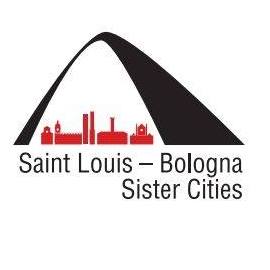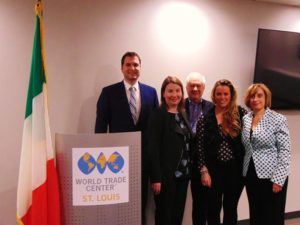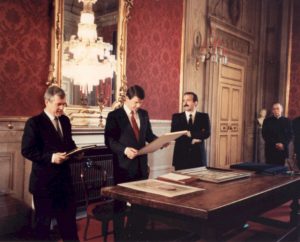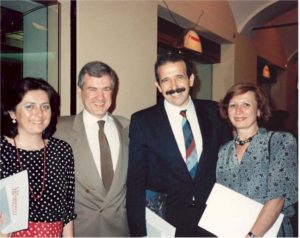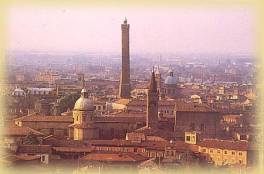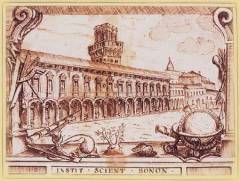ST. LOUIS SISTER CITIES PROGRAM
In 1987, Franco Giannotti, Giovanni Ferrara, and Msgr. Salvatore Polizzi founded St Louis – Bologna Sister Cities Committee with the cooperation and support of then Bologna Mayor Renzo Imbeni and St Louis Mayor Vincent C. Schoemehl. The sister cities committee flourished for over a decade with reciprocal youth summer exchange programs, language teacher exchanges, cultural tours, lectures, and scholarship fundraising for college students.
In October 2017, after a period of inactivity, Michael J. Cross, founder of the Italian Community of St. Louis, reformed the St Louis – Bologna Sister Cities Committee along with Franco Giannotti, Giovanna Leopardi, Francesca Giacomozzi, Benedetta Orsi, and Dr. Elizabeth Bernhardt. A board of directors was formed and, once again, relations between St. Louis and Bologna were reignited.
Our main event of the year is the annual St Louis Italian Christmas Concert which takes place on the first Saturday of December. It stars Bologna native and mezzo-soprano, Benedetta Orsi among other internationally acclaimed musicians. Each year, we also participate in the International Institute’s Festival of Nations with an arts and crafts booth. Over 200 children participate in our cultural activities during the Festival. Under the direction of Dr. Elizabeth Bernhardt, professor of Italian at Saint Louis University, we are resurrecting the exchange program with Bologna. One of our goals is also to establish deeper economic ties between St Louis, Bologna, and the entire region of Emilia-Romagna.
The St Louis – Bologna Sister Cities also partners with various Italian clubs and associations in the St Louis region to fund and sponsor the St Louis Italian Language Program. Events that we participate and help organize include the annual celebrations of Carnevale and Ferragosto which are widely attended.
For further information on our activities, initiatives, and events, please send us an email at: [email protected]
Bologna (Emilia-Romagna)
Capital of the Emilia-Romagna region, Bologna is situated 54 m. above sea level, in a pleasant position at the foot of the outlying Apennine ramifications, at the mouth of the plain of the Reno and Savena valleys.
The Etruscans founded Bologna on a previous Italic settlement in the 6th century B.C., giving it the name Felsina. Two centuries later it became a settlement of the Boii Gauls; subsequently (191 BC.), already known by the name of Bononia, it became fully romanized. After the fall of the Empire, it fell under Byzantine, Lombard and Frankish rule until it became a free municipality (11th century). The foundation of the famous university, one of the oldest in the world, transformed the city into the cultural capital of Europe. At the same time, Bologna assumed the precise urbanistic and architectural character still evident today, expanding within successive sets of city walls. In 1513, after being the object of struggles between the various Signorie and the Papacy, it became part of the Papal State to which it remained loyal, with exception of the Napoleonic period, until 1859 when, following the Second War of Independence and the Plebiscites, it became a part of the Kingdom of Italy.
The city is rich in monuments and works of art, notably: Piazza Maggiore, the heart of Bologna, San Petronio (Gothic, 14th-17th century), the Palazzo dei Notai (14th century), the Palazzo Comunale (13th-16th century), the Palazzo del Podestà (15th century), the Palazzo di Re Enzo (13th century) and the Fontana del Nettuno (Renaissance fountain, by Giambologna). The Cappella Bentivoglio (Renaissance, works of art by Veneziano and Ludovico Carracci), San Giacomo Maggiore (13th-14th century, Gothic), San Domenico (13th century, with works of art by N. Pisano, Michelangelo and Filippino Lippi), San Francesco (12th century), the Archiginnasio (16th century), Santa Maria dei Servi (14th-15th century), the Palazzo della Mercanzia (14th century) and the `torri pendenti’ (12th century leaning towers: degli Asinelli, 98 m., view of the city, and della Garisenda, 48 m.), are all worth a visit.
The economy of Bologna is based on an active industrial sector which, traditionally strong in the transformation of agricultural products and in animal husbandry, also includes the footwear, textile, engineering, chemical printing and publishing industries, as well as on flourishing commercial activity.
Events:
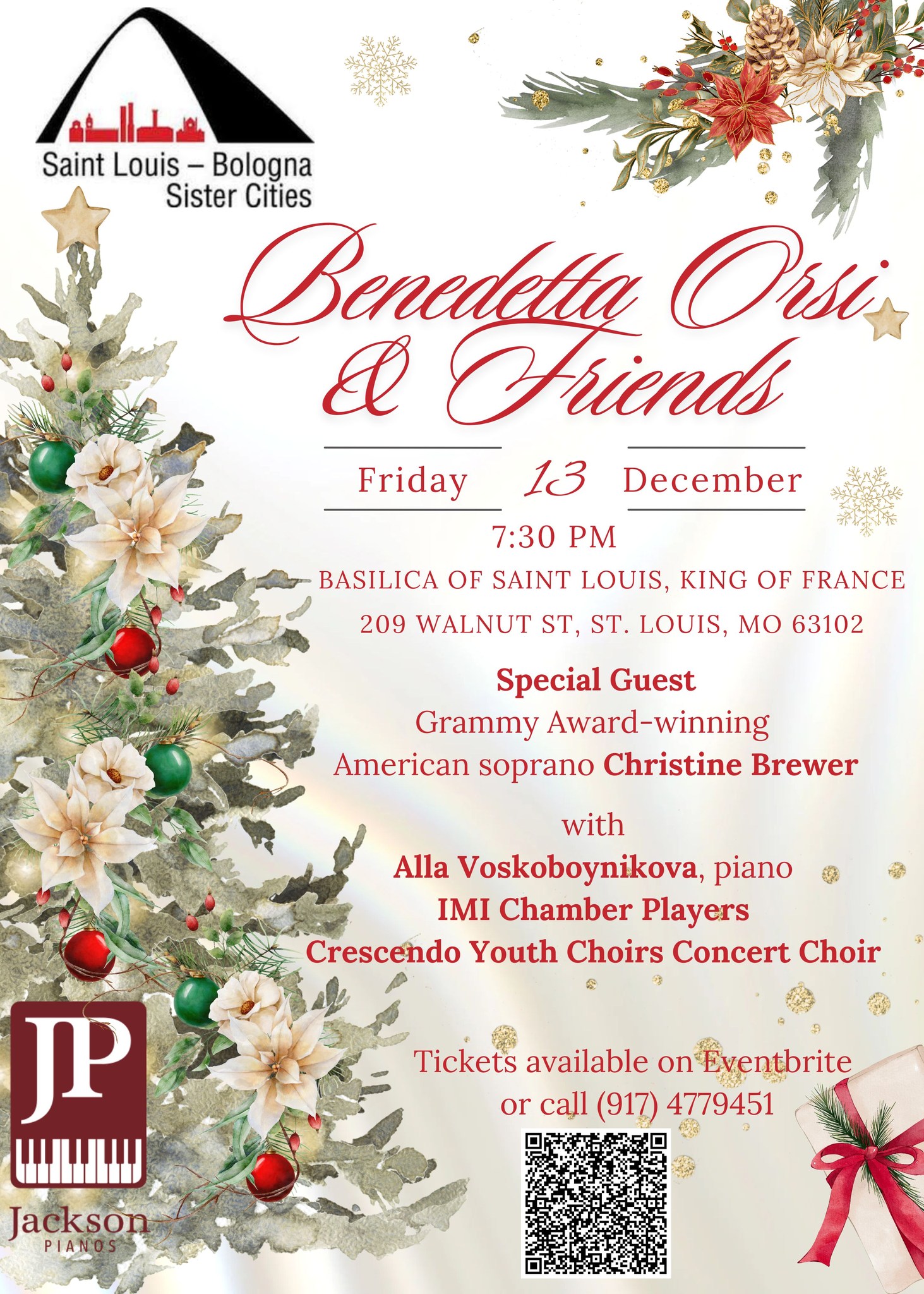
Tickets available on Eventbrite
Childrens’s Book Fair (March)
Trade Fairs (June, other exhibitions during the year)
Bologna’s Music Festivals (summer)
Famous People:
Agostino Carracci (artist, 1557-1602), Annibale Carracci (artist, 1560-1609), Lodovico Carracci (artist, 1555-1619), Guido Reni (artist, 1575-1642), Luigi Galvani (physicist, 1737-1798), Ulisse Aldrovandi (philosopher and physician, 1522-1605), Guglielmo Marconi (inventor, 1874-1937), Marcello Malpighi (physician, 1628-1694), Benedetto XV (Pope, 1675-1758), Ottorino Respighi (musician, 1879-1936), Giorgio Morandi (artist, 1890-1964) and Pier Paolo Pasolini (film director and writer, 1922-1975).
Cultural Institutions:
University, Galleria d’Arte Moderna, (modern art gallery), Teatro Comunale (theatre), Casa di Carducci, with library; Pinacoteca Nazionale (art gallery, featuring works of art, among others, by Giotto, Guido Reni, Parmigianino, Carracci, Raffaello and Tiziano), Museo Civico Archeologico (archeological museum), Museo Storico della Tappezzeria (tapestry museum), Museo delle Navi.
In the Province:
Imola (Museo delle Armi e delle Maioliche, Museo Archeologico, interesting historical centre), Lizzano in Belvedere (Apennine holiday resort), Porretta Terme (thermal spa), Marzabotto (Etruscan remains, museum), Castiglione dei Pepoli.
Board of Directors:
Michael J Cross – President
Dr. Elizabeth Bernhardt, Ph.D. – Vice President
Giovanna Leopardi – Secretary
Kristine Galati – Treasurer
Benedetta Orsi – Officer
Cav. Franco Giannotti – Officer
Honorary Members of the Board:
Joseph Colagiovanni, Vice-Consul of Italy in St. Louis
Facebook:
https://www.facebook.com/stlouisbologna/
Contact:
[email protected]
Committee Membership (Annual):
Individual $15
Family $25
Student $10
Supporting Patron $50
Corporation $100
